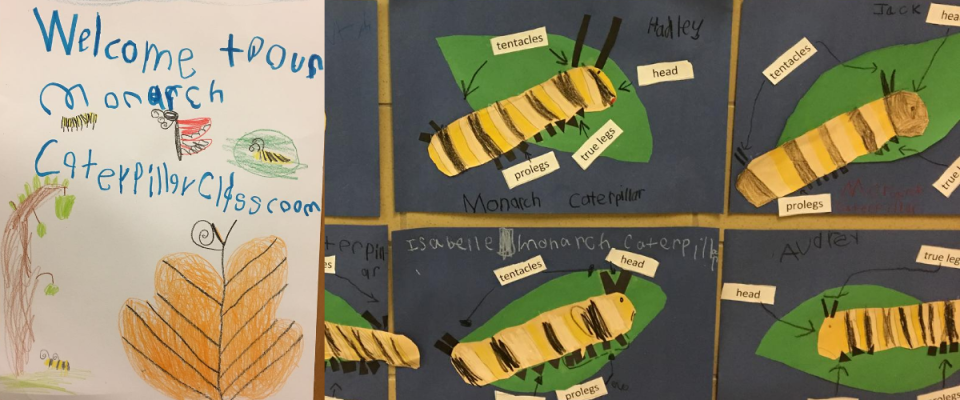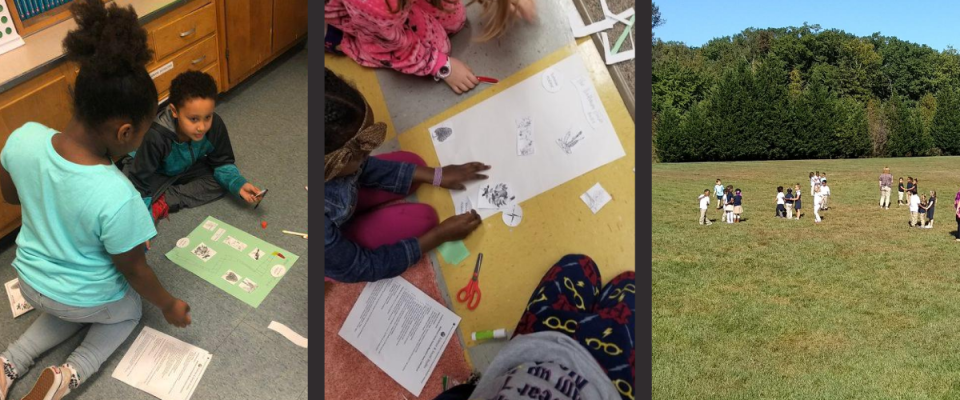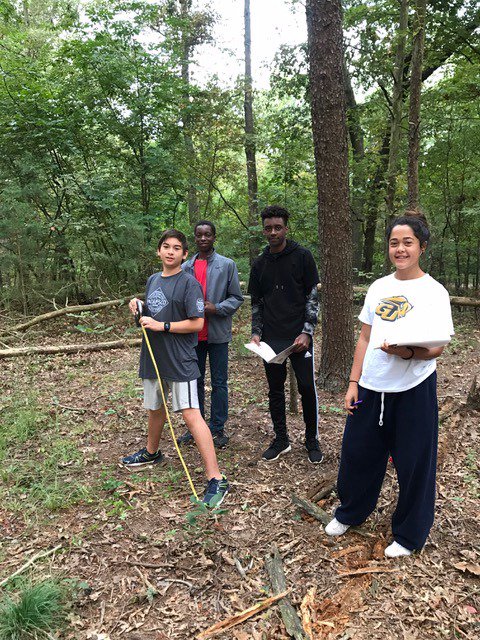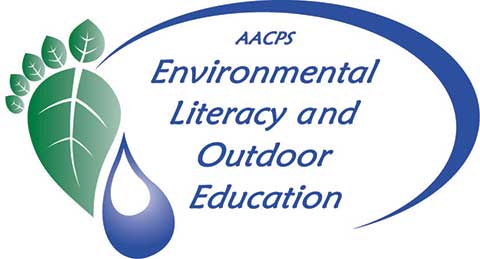In 2010, Maryland became the first state in the nation to implement an environmental literacy high school graduation requirement. In 2011, the Maryland State Department of Education (MSDE) instituted Pre-K through 12 Environmental Literacy Curriculum Standards to be integrated into the curriculum of each school system.
These actions gave a new name and new mandate to the AACPS Outdoor Education Office, which became the AACPS Environmental Literacy and Outdoor Education Office.
It is now our responsibility to take environmental literacy into schools and classrooms by providing curriculum and training to teachers.
Each grade level or course listed below includes an interdisciplinary environmental literacy unit or focus in which students investigate and take action on a local environmental issue. We continue to strive to get every student outdoors every year!
PreKindergarten
Prekindegarten students investigate “What’s the Trouble with Trash?” Students describe trash, explain how trash goes to landfills, recognize materials and items that can be re-used and recycled, identify litter in the school yard, and contribute to an environmental action plan.
Kindergarten
Students investigate “Why are Trees Terrific?” They participate in classroom learning and outdoor experiences to identify tree needs, parts of trees and how trees survive. Students engage in a one-day field experience to learn about the life cycle of a tree and how trees and forests provide food and homes for living things. Back at school, students take action by planting and caring for a tree.
Grade 1

How Can We Help Monarch Butterflies? Students investigate and take action on issues related to Monarch butterflies. Students care for and observe Monarch caterpillars and study Monarch habitat needs, migration and causes of Monarch population decline. Outdoor learning takes place at school. Students take action by tagging/releasing the butterflies and by maintaining schoolyard Monarch gardens.
Grade 2

How Can We Improve Wildlife Habitats? Students conduct research on local and global habitats and the human impact on them. Students take action by propagating native plants for use at home.
Grade 3
How Can We Make a Positive Change in Our Environment? At the end of third grade, students participate in an interdisciplinary unit. They investigate and take action on an environmental issue of their choice, applying the 21st Century skills they have acquired throughout the year: Communication, Collaboration, Critical Thinking and Creativity.
Grade 4
Students investigate environmental issues through their science curriculum. Topics such as animal adaptations (applied to pollinators), erosion, and energy use are connected to the impact of humans on the Chesapeake Bay, its watershed and the things that live there. The science curriculum includes an environmental action project for each topic.
Grade 5
Within their social studies curriculum, students investigate “How do state and local laws address environmental issues?” Students “promote the common good” by investigating and taking action on local environmental issues such as litter, plastic bags, pet waste or fertilizers. Action may include informing people about a law or issue and how they can help, persuading people to change their behavior, creating items to help people change, or persuading lawmakers to improve a law or create a law.
Grade 5 students also complete water safety lessons in language arts and science that reinforce the in-pool lessons they will get when they participate in the Water ready with Drownproofing water safety program. Using their student Drownproofing handbooks, students read about personal water safety and summarize important information. They also collaborate to create a cold water “quilt” that has drawings to summarize key points.
Grade 6
How Do We Use the Chesapeake Bay Sustainably? Through the ecology of Chesapeake Bay species and restoration projects, students examine the human interaction with the environment including policy, economics, and historical significance in addition to stormwater runoff, the biology of living things, restoration, and pollution. Students participate in a field experience and action projects depending on the project for their school. All projects use water quality and environmental issues affecting living things to investigate the Chesapeake Bay.
Family & Consumer Science students investigate the green movement’s impact on the fashion industry and present research on a chosen topic.
Grade 7
How Can You Make A Difference? Students investigate the impact of human population growth on the availability of natural resources and environmental quality. Students use a Green School Report Card to evaluate their school. Students make personal choices to make positive environmental changes at school and in their community.
Grade 8
How Are Humans Affecting Our Global Environment? Students investigate the causes and effects of environmental change. Students work in cooperative groups to research one of the ways that humans impact the natural change process. Students learn about global issues such as climate change and invasive species.
High School

Biology
How Have Human Activities Impacted Biodiversity? Students analyze manmade and human features in the environment on school grounds, and determine if these features promote effect surrounding aquatic ecosystems. Students conduct a Bioblitz on school grounds, select one human activity, and analyze the impact of this human activity on the environment and biodiversity. Students design a solution to reduce the negative effects on environment and biodiversity.
Environmental Science
Students study Next Generation Science Standards through the lens of the environment. The first unit focuses on chemical reactions taking place on Earth, with a culminating project that addresses air quality. The second unit focuses on the atmospheric history of Earth, with a final project focused on the effect of chemical contaminants on organisms that live in the Chesapeake Bay. In the third marking period students investigate how changes in Earth’s energy flow affect biodiversity. Students work to remove invasive plant species from their local environment. The fourth marking period is focused on climate change, and students are challenged to model a solution to the impacts of local rising waters.
Government
How should federal, state, and local governments collaborate to create policies to protect ecosystems like the Chesapeake Bay? Students investigative the interaction of government and non-government agencies on environmental issues. Students examine the Federal government’s influence on nationwide environmental issues, the Chesapeake Bay region and Maryland. Students consider the actions and influence of state and local governments and non-governmental entities influence on government action and public opinion. Students present their findings to inform the public, persuade government action, or add support to non-governmental entities.
Health
Students investigate how the changes in the environment affect health. They examine how global climate change effects the spread of infectious disease and how the environment influences the emergence of disease. The new 9th grade environmental science course encompasses the assessed next generation science standards through the lens of climate change. There are four units in the course that correspond with each marking period. The first unit focuses of human impact on the environment, with a culminating project that addresses local climate change issues. Units 2-4 use climate change as a foucs to teach concepts ranging from Newtons laws to genetics. The course includes a wide array of hands-on environmentally focused labs and activities.




